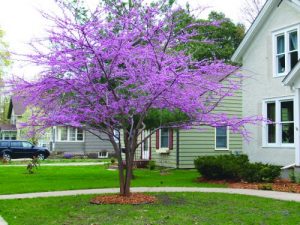1.Weeding
Set aside a time twice a week to spend walking over your landscape and remove those pesky little plants by hand. A dandelion digger, soil knife or small trowel are excellent tools to help with this task. If undesirable plants are allowed to get bigger you may have to use a tree puller or large shovel. Pre-emergent herbicides are helpful but are commonly applied several times during growing season and can have chemicals that runoff into waterways polluting the water.
2. Pruning
There is a right and a wrong time of the year to complete pruning for many plant varieties. One general rule is spring bloomers need to be cut right after they finish blooming. Shrubs also should be managed in a timely fashion so that extra energy wouldn’t be required for trimming as is the case when they are overgrown. Using hand-powered hedge clippers, Felco pruners or loppers can be a great workout with no fuel emissions involved. Dispose of the debris at a compost site or use in your firepit!
3. Mulching
When a locally sourced product is used at a proper depth (3-4” for wood mulch and 2-3” for landscape rock) it conserves moisture and greatly reduces weed growth in the landscape. Varying product types also provide great textural interest. Often mulch needs top dressing every couple of years or so to maintain a fresh look and maximum weed suppression. A battery powered leaf blower is highly recommended for rock areas to keep out debris and plant litter over the season so that a layer of compost (dirt) is likely to begin to form in the rock.
4. Fertilizing
Proper soil preparation and plant selection will ultimately lead to a decreased need to supplement fertilizer for plant health. Many available fertilizer products add too much of one type of nutrient and not enough of another and are developed for a “quick shot” approach to plant health. The “unused” nutrients can runoff into the water system and negatively affect areas downstream. Native plant material is a good place to start for selection in a landscape design that won’t need special treatments.
5. Watering
Similar to fertilizing, the proper plant in the proper place will just about eliminate the need for supplemental watering once established. Also properly designing a landscape with swales and depressions for water collection or directing can be helpful to replenish ground water.
Amy Voight Landscape Professional,
A-Team Landscape ateamlandscape.com | 507-581-6886











